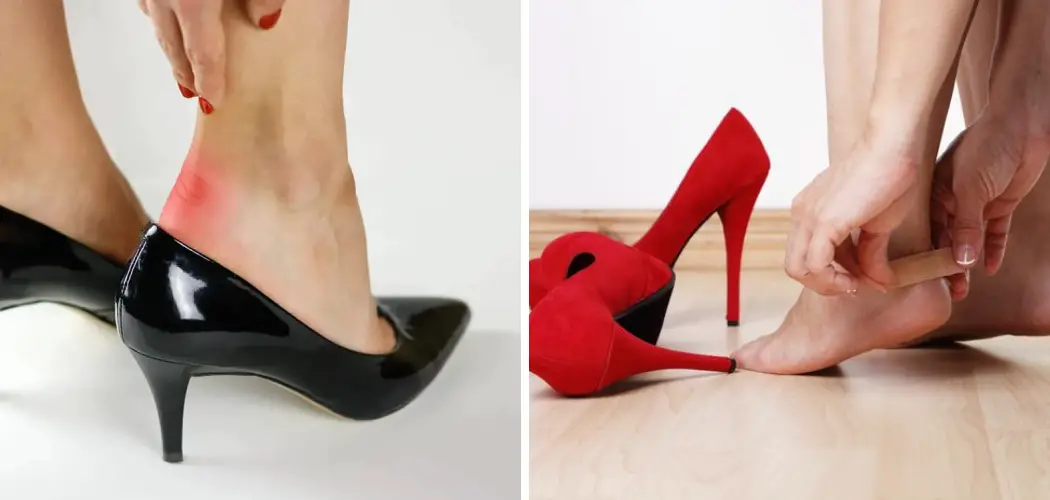Are you struggling with an uncomfortable, blister-causing shoe rubbing your heel? Don’t worry; it’s otherwise known as a common problem shared by many of us. Whether it’s due to new shoes or worn out ones, this issue can be easily prevented with the right knowledge and techniques. In this article, we will provide you with simple steps and tips on how to stop a shoe from rubbing your heel. With our help, soon enough you’ll be able to wear any pair of shoes in comfort – without worrying about pesky rubs and blisters!
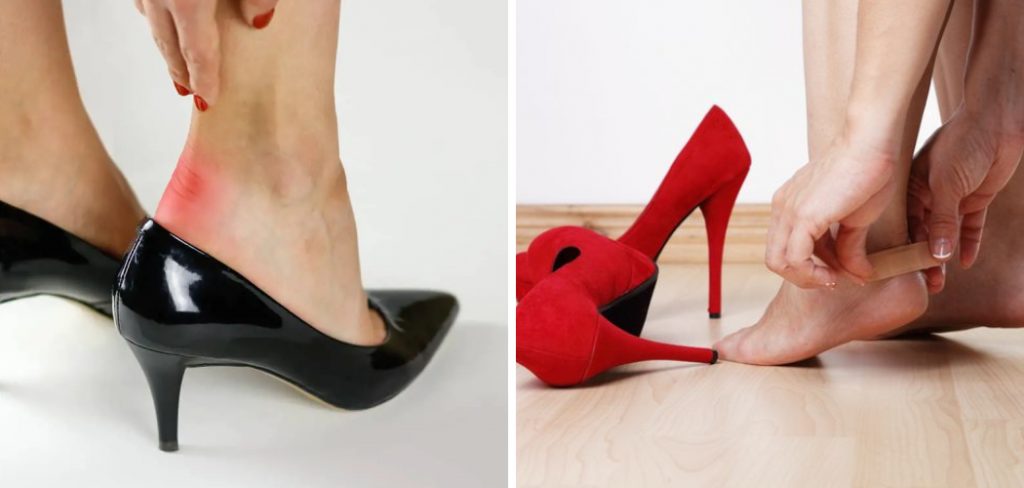
Fortunately, there are several strategies you can use to help prevent this issue from happening again in the future. In this blog post, we’ll dive into what causes shoes to rub your heels, how you can tell if they’re rubbing your heels when trying them on in-store and finally, tips on how to stop them from doing so while wearing them out in public. Read ahead for all the advice!
Summary: To stop a shoe from rubbing your heel, try applying a lubricant such as petroleum jelly or blister block to the affected area. You could also use moleskin pads or heel grips to add extra cushioning. If the problem persists, consider using insoles or getting your shoes stretched by a professional. To prevent future rubbing, make sure your shoes fit properly, and wear socks to reduce friction.
Why is It Important to Stop a Shoe From Rubbing Your Heel?
It is important to stop a shoe from rubbing your heel for many reasons. Such as:
1. Causing Discomfort
One of the primary reasons why it is important to stop a shoe from rubbing your heel is that it can cause discomfort. When your shoes rub against your heels, it can result in redness, tenderness, and even blisters if left untreated.
2. Risk of Injury
Another reason why it is important to stop a shoe from rubbing your heel is that it can lead to an increased risk of injury. Shoes rubbing your heel can cause friction, which may lead to irritation and inflammation, putting you at risk for sprains and strains.
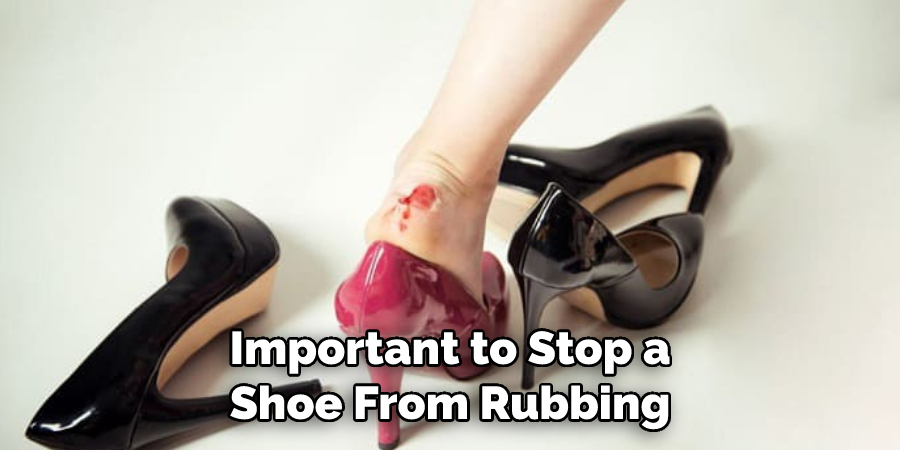
3. Poor Performance
Finally, if a shoe rubs against your heel, it can also affect your performance. When shoes are too tight or rub incorrectly, it can cause distraction and discomfort, making it difficult to focus on the task at hand.
By taking the necessary steps to stop a shoe from rubbing your heel, you can help ensure that you remain comfortable, safe, and able to perform your best.
15 Ideas On How to Stop a Shoe From Rubbing Your Heel
1. Wear the Right Size Shoe
This is one of the most important steps to ensure your shoes don’t rub against your heels. Shoes that are too tight or too small will cause friction, which can lead to shoe rubbing and blisters. Make sure you buy shoes that fit correctly to avoid uncomfortable rubbing against your heel.
2. Choose Leather Shoes
Leather is a much softer material than fabric or synthetic materials, which can be rough against your skin. Leather shoes also provide more cushion and protection than other materials, so they are less likely to rub against your heel.
3. Wear Soft Socks
Soft cotton socks can go a long way in preventing shoe rubbing on your heels. When you wear thick, rough socks, the fabric can rub against your skin and cause friction. Choose soft, breathable fabrics that won’t irritate your skin.
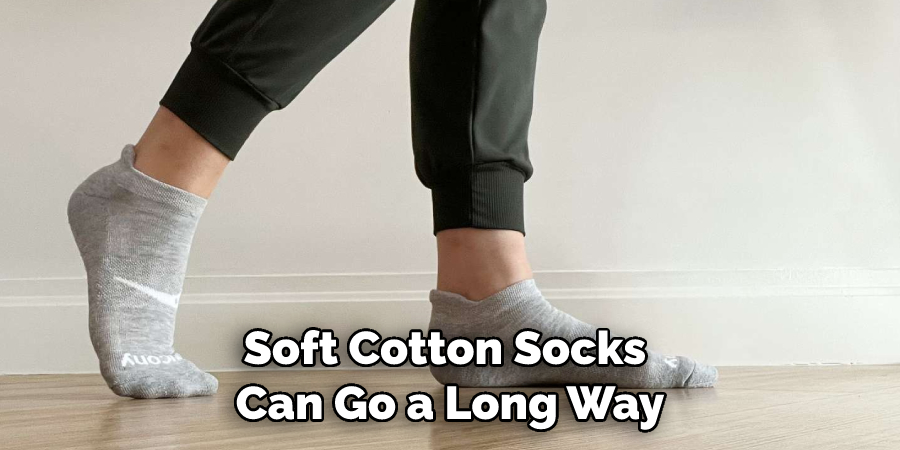
4. Protect Your Heel With Band-Aids
Using a band-aid to protect your heel from rubbing is an easy fix if you don’t want to change shoes. Simply place the band-aid over the area that’s rubbing, and it will act as a barrier so your heel won’t get irritated.
5. Invest in Heel Pads
Heel pads are small inserts that fit into your shoes to provide extra cushion and support to your heels. They can prevent shoe rubbing by giving the heel area more padding, and they also help reduce the risk of developing blisters.
6. Apply Baby Powder
Baby powder can be used to reduce friction between your skin and your shoe. Sprinkle a small amount of powder into your shoes, paying special attention to the heel area. This will help absorb moisture and keep your feet dry so that your shoe won’t rub against your heel as much.
7. Choose Shoes With Padded Insole
Shoes with a padded insole will provide extra cushion and support to the heel area, helping to reduce friction and rubbing. Look for shoes with thick insoles made of materials like foam or gel that will provide the most cushion.

8. Wear Loose Fitting Shoes
Too tight shoes can cause friction and rubbing, so make sure you choose shoes that fit correctly. Avoid buying shoes that are too small or narrow, as they may be more likely to rub against your heel. So if you’re looking for shoes that won’t rub, always opt for a size larger than usual.
9. Stretch the Shoes
If you already have a pair of shoes that is rubbing against your heel, try stretching them out to make them fit better. This can be done by using shoe stretchers or simply stuffing your shoes with newspaper and leaving them overnight.
10. Wear Heel Grips
Heel grips are small pieces of foam or fabric that can be placed between your heel and the shoe to provide extra cushion and support. They help reduce friction in the area so that your shoe won’t rub against your heel as much.
11. Choose Shoes With Heel Cup
Heel cups are molded pieces of material that fit inside the shoe and provide extra cushion and support to your heels. They help reduce friction in the heel area so that your shoe won’t rub against your skin as much.
12. Rub Petroleum Jelly on Your Skin
Petroleum jelly can be used to reduce irritation and friction between your skin and the shoe. Apply a thin layer of petroleum jelly to the area that’s rubbing so that your heel won’t get irritated as easily.

13. Choose Shoes With Heel Counter
Heel counters are pieces of strong material that fit into the heel area of a shoe and provide extra support. They can reduce friction by providing an extra barrier between your skin and the shoe so that your heel won’t get irritated as easily.
14. Insert a Soft Insole
If you have a pair of shoes that are rubbing against your heel, try inserting a soft insole to provide extra cushion and support. Look for insoles made of materials like foam or gel that will provide the most cushion, and make sure to choose one that fits your shoe correctly.
15. Take a Break From Your Shoes
If you’ve been wearing the same shoes for a long time and they’re causing your heel to rub, it might be time to take a break. Put away your shoes and give your feet some time to rest so that they can heal and the irritation will go away.
Following these tips will help you stop a shoe from rubbing your heel so that you can stay comfortable and enjoy wearing your favorite pair of shoes. With just a few simple steps, you can keep your heels protected and reduce the risk of developing blisters or other painful conditions.
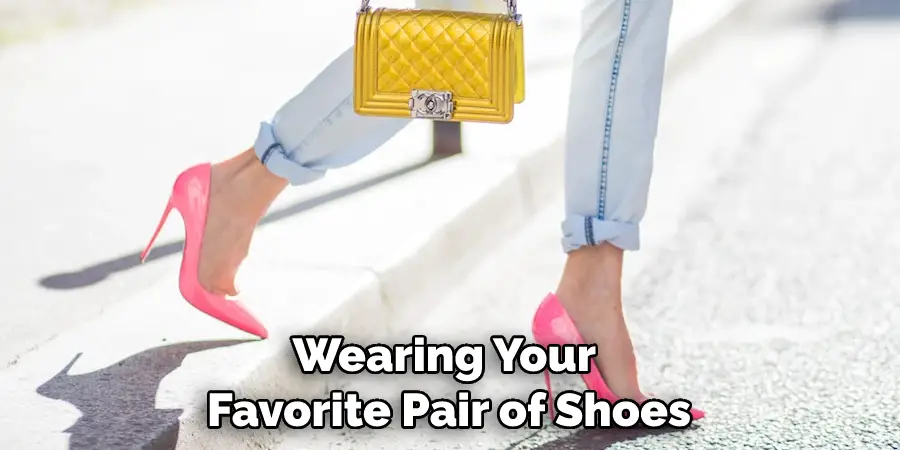
Frequently Asked Questions
What Precautions Can I Take to Avoid Heel Rub?
It is important to choose shoes that fit properly and are comfortable. Before buying a pair of shoes, make sure that they have sufficient support and cushioning in the back where your heel will come into contact with the shoe. When trying on a pair of new shoes, stand up and walk around in the store to ensure they are a good fit. If possible, wear them around the house for a few hours to ensure that they do not rub or cause discomfort.
What Can I Do If My Shoe Is Rubbing My Heel?
If you have already purchased a pair of shoes and notice that they are rubbing your heel, try applying some padding to the area with a moleskin pad or cotton ball. This may provide enough cushioning to prevent any further discomfort. You can also try wearing thicker socks to help minimize the rubbing. If the problem persists, you may need to purchase a different pair of shoes that fits better and does not rub your heel. Also, ensuring your shoes are laced or tied properly can help prevent heel rubbing.
What Are Some Other Tips to Help Prevent Heel Rubbing?
It is important to wear the right type of socks when wearing shoes. Choose a pair that is made of cotton and has extra cushioning around the heel area for added comfort. It is also a good idea to wear shoes with breathable fabric so your feet do not become too sweaty.
Finally, make sure to regularly replace your shoes as they will eventually become worn and less comfortable. This can help you avoid the problem of heel rubbing altogether. Also, invest in a good pair of insoles that can be used to help cushion your foot and provide better arch support.
Should I See a Doctor If I Am Experiencing Regular Heel Rubbing?
If you have tried all the methods mentioned above and still experience regular heel rubbing, seeing a doctor may be a good idea. They can provide additional advice on how to prevent discomfort and check for any underlying medical conditions that could be causing the issue.
Additionally, a doctor may be able to provide a special shoe insert or orthotic device to help alleviate the problem. If you are experiencing heel discomfort that does not seem to improve with any of the methods mentioned above, it is important to seek medical advice for further treatment and diagnosis.
Can I Use Moleskin to Stop My Heel From Rubbing?
Moleskin is a soft, cushiony material that can be used to pad the back of your shoe. It will help prevent friction between your heel and the shoe and reduce discomfort. Additionally, you can use moleskin on other areas where shoes may rub, such as around the toe area or the sides of your foot. It is important to ensure that the moleskin is properly secured and will not come off when walking. Use a bandage or double-sided tape to hold it in place if necessary.
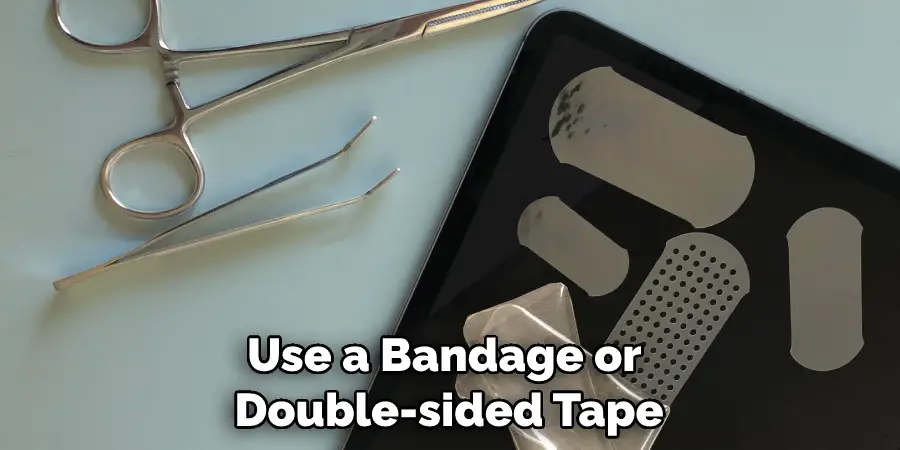
Conclusion
Now you know how to stop a shoe from rubbing your heel, so that you can stay comfortable and enjoy wearing your favorite pair of shoes. Be sure to choose the right type of shoes and make sure they fit properly, as this will help reduce heel rubbing. Additionally, use moleskin and other padding techniques to cushion the area further, and wear thicker socks for extra protection.
Finally, if necessary, seek medical advice to help prevent and alleviate any discomfort. Following these tips should help you enjoy wearing shoes without any more heel rubbing! As it is important to take care of your feet, it’s just as crucial to finding shoes that are comfortable. Even the most well-fitting shoe can rub against your heel, making for an uncomfortable experience.
However, there are several things you can do to help prevent that from happening. Make sure to weigh your options when it comes to finding the right pair of shoes for you and test out how a prospective pair feels after a few minutes in store. You can also try using special cushioning materials or bandages. If nothing else works, seek out a shoe repair shop and have them add extra leather padding to reduce friction and make the shoe fit more comfortably. Ultimately, staying informed on proper fitting techniques will ensure that your feet feel great after walking around town in your new shoes!

